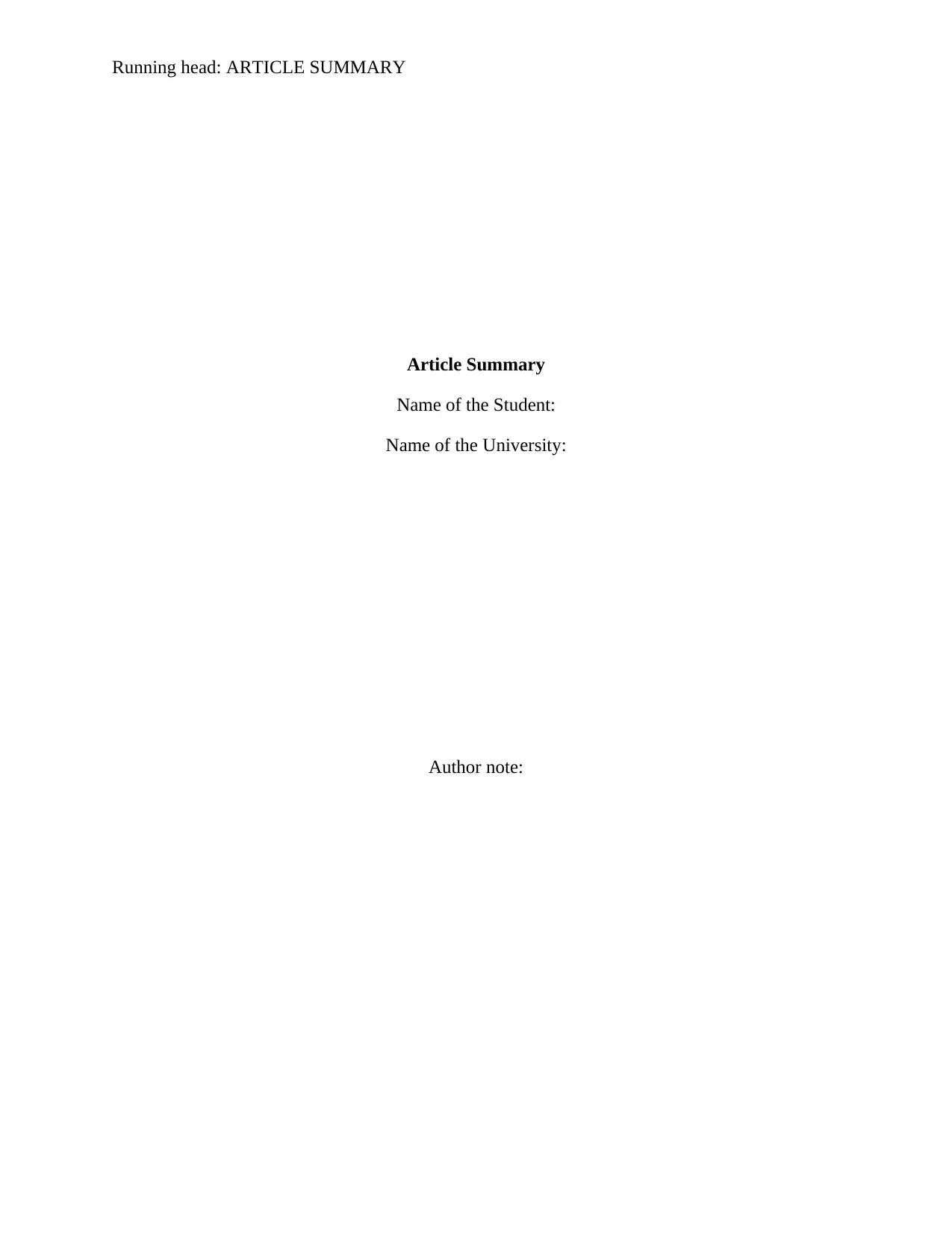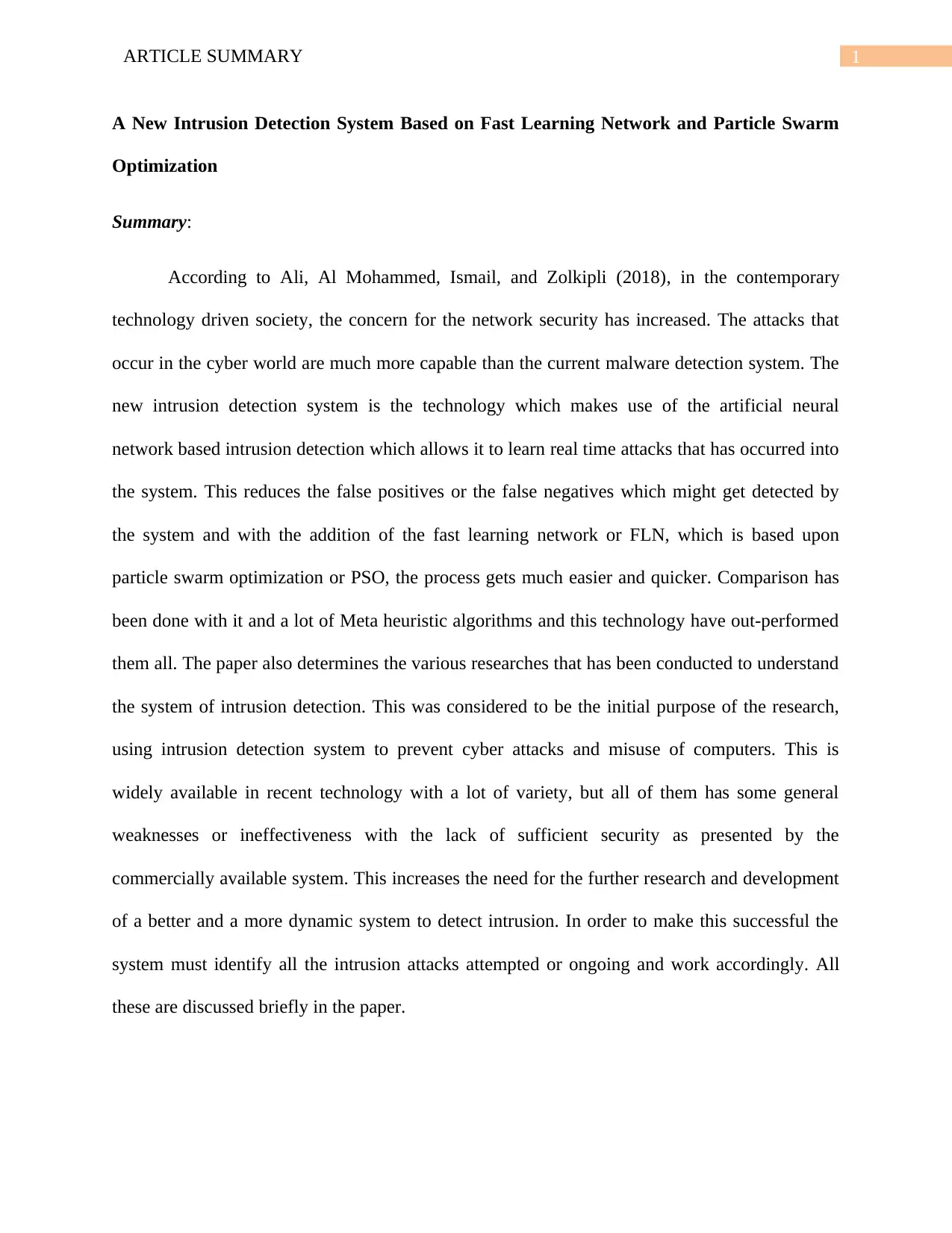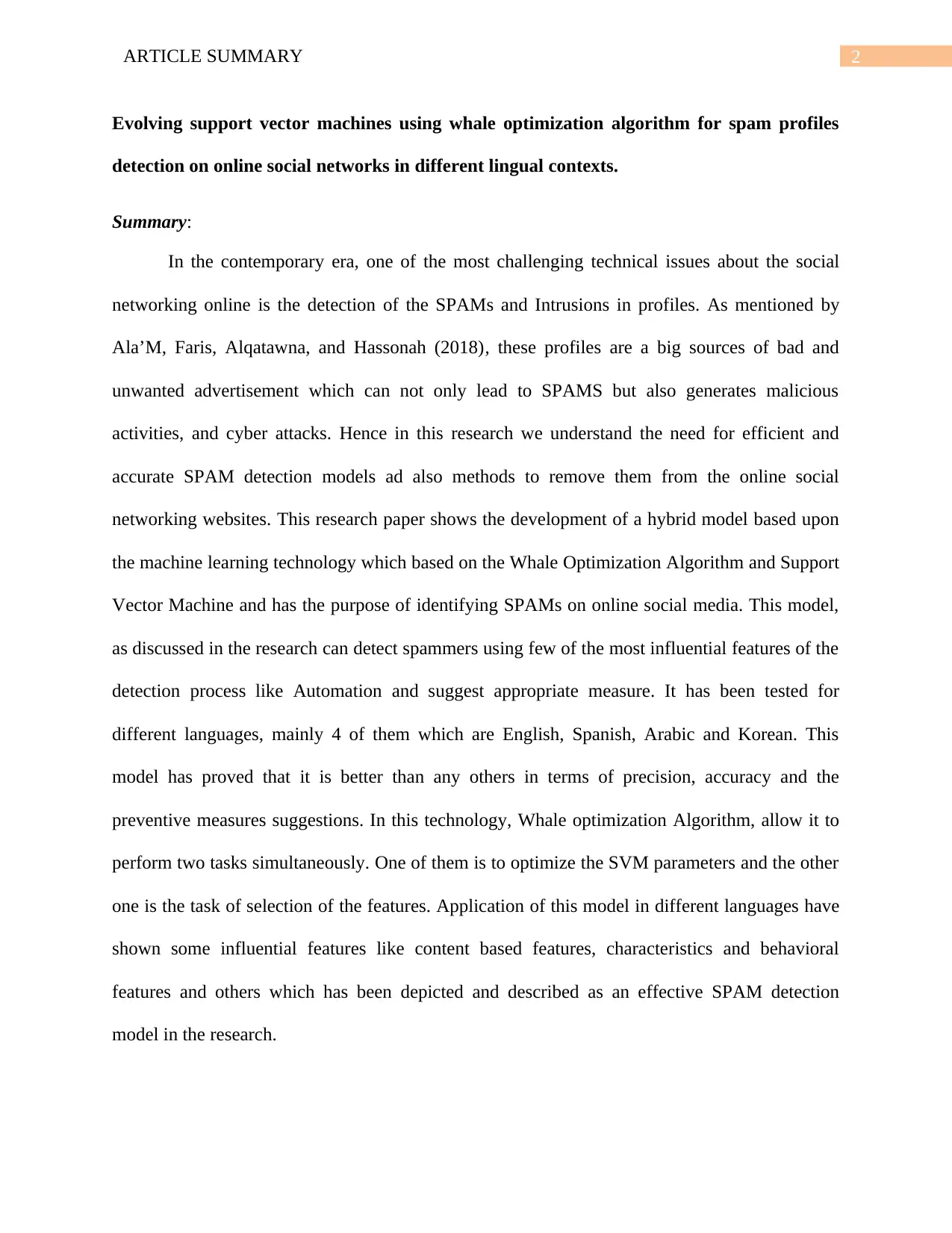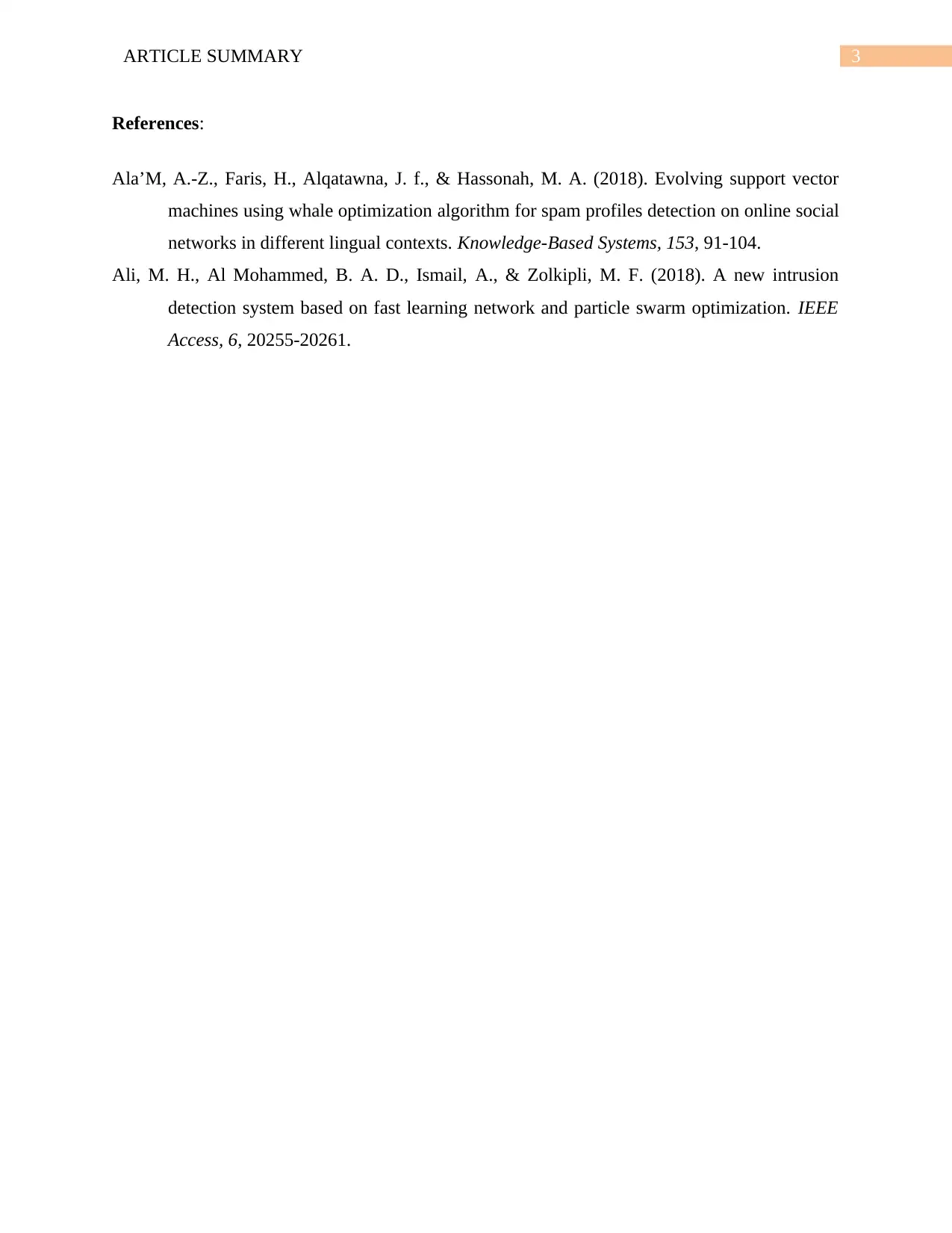University Article Summary Report: AI for Intrusion and Spam Detection
VerifiedAdded on 2022/09/26
|4
|743
|29
Report
AI Summary
This report provides summaries of two research articles. The first article, "A New Intrusion Detection System Based on Fast Learning Network and Particle Swarm Optimization," discusses the use of artificial neural networks and particle swarm optimization to create a more effective intrusion detection system, reducing false positives and negatives. The second article, "Evolving support vector machines using whale optimization algorithm for spam profiles detection on online social networks in different lingual contexts," focuses on a hybrid model using machine learning, specifically the Whale Optimization Algorithm and Support Vector Machine, to detect spam profiles in multiple languages. Both articles highlight the use of advanced AI techniques to address contemporary challenges in cybersecurity and online social networks. The articles also provide a comparative analysis with other metaheuristic algorithms, and detail the influential features used in each of the models.
1 out of 4











![[object Object]](/_next/static/media/star-bottom.7253800d.svg)